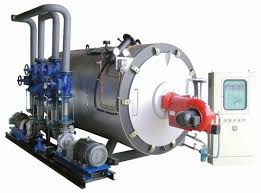
Feb . 01, 2025 03:07 Back to list
biomass fired thermal oil boiler
Understanding the boiling point of thermal oil is pivotal for industries relying on efficient heat transfer systems. Thermal oil technology offers an advantageous alternative to traditional steam-based heating, largely due to its superior thermal stability and non-reactivity at elevated temperatures. Having hands-on experience in the field of industrial heating provides a unique perspective on the nuances of thermal oil's behavior.
A common misconception among operators is assuming that the mere choice of a high-boiling-point oil can solve all system issues. However, it's the congruence between system design, operational parameters, and the thermal oil's properties that dictates the success of the application. Meticulous calibration and regular maintenance checks are essential to uphold system integrity and efficiency. Authoritativeness in this context is reflected by adhering to guidelines set by institutions like the American Society of Mechanical Engineers (ASME) and conducting operations in compliance with industry standards. Educational workshops and certification programs further bolster an operator's ability to handle thermal oils proficiently, emphasizing the importance of understanding chemical compositions and thermal properties. Trust in using thermal oil boils down to empirical data and real-life case studies where industries like chemical manufacturing, food processing, and asphalt production have benefited from their inclusion. It's worthwhile to trust insights gathered from long-term studies and accumulated industrial experience, which consistently demonstrate the advantage of thermal oil systems in terms of efficiency and safety. In conclusion, the boiling point of thermal oil is a pivotal factor in designing and operating heat transfer systems. By combining technical expertise, hands-on experience, and adherence to industry standards, thermal oils can be managed effectively to ensure optimal performance and reliability, cementing their status as a crucial component in modern industrial heat transfer applications.


A common misconception among operators is assuming that the mere choice of a high-boiling-point oil can solve all system issues. However, it's the congruence between system design, operational parameters, and the thermal oil's properties that dictates the success of the application. Meticulous calibration and regular maintenance checks are essential to uphold system integrity and efficiency. Authoritativeness in this context is reflected by adhering to guidelines set by institutions like the American Society of Mechanical Engineers (ASME) and conducting operations in compliance with industry standards. Educational workshops and certification programs further bolster an operator's ability to handle thermal oils proficiently, emphasizing the importance of understanding chemical compositions and thermal properties. Trust in using thermal oil boils down to empirical data and real-life case studies where industries like chemical manufacturing, food processing, and asphalt production have benefited from their inclusion. It's worthwhile to trust insights gathered from long-term studies and accumulated industrial experience, which consistently demonstrate the advantage of thermal oil systems in terms of efficiency and safety. In conclusion, the boiling point of thermal oil is a pivotal factor in designing and operating heat transfer systems. By combining technical expertise, hands-on experience, and adherence to industry standards, thermal oils can be managed effectively to ensure optimal performance and reliability, cementing their status as a crucial component in modern industrial heat transfer applications.
Share
Latest News
-
High-Efficiency Commercial Oil Fired Steam Boiler for Industry
NewsJul.30,2025
-
High-Efficiency Biomass Fired Thermal Oil Boiler Solutions
NewsJul.30,2025
-
High Efficiency Gas Fired Thermal Oil Boiler for Industrial Heating
NewsJul.29,2025
-
High-Efficiency Gas Fired Hot Water Boiler for Sale – Reliable & Affordable
NewsJul.29,2025
-
High Efficiency Biomass Fired Hot Water Boiler for Industrial and Commercial Use
NewsJul.29,2025
-
High-Efficiency Biomass Fired Hot Water Boiler for Industrial Use
NewsJul.28,2025
Related PRODUCTS
Copyright © 2025 HEBEI HONGZE BOILER MANUFACTURING CO., LTD. All Rights Reserved. Sitemap | Privacy Policy






















